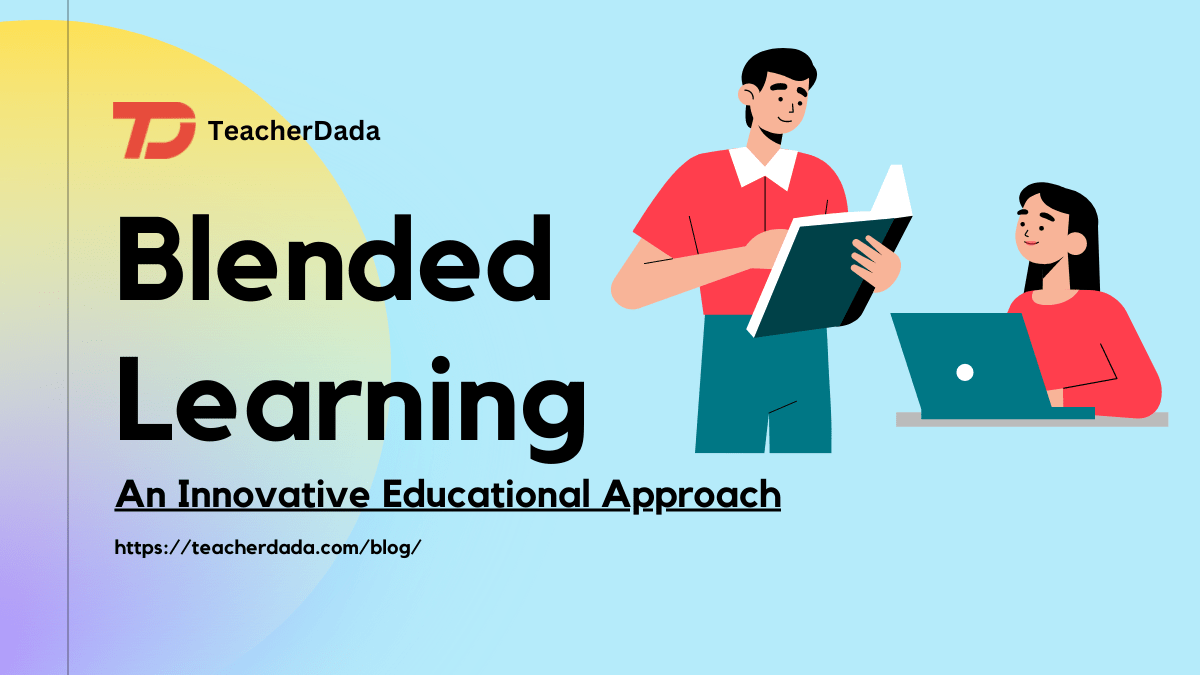As an educator, it’s important to stay up to date on the latest teaching methods and techniques. One of the most popular approaches in the classroom today is blended learning, which combines traditional face-to-face instruction with online learning.
In this blog post, We’ll cover the basics of blended learning, including its definition, principles, benefits, challenges, examples, and best practices. We’ll also go into detail about the technology tools available for blended learning and provide tips on how to create an effective blended learning course. After reading this post, you’ll have a better understanding of what blended learning is and how it can be used in the classroom.

Introduction to Blended Learning
In recent years, there’s been a shift in the way educators teach and engage with their students. With the rise of digital technology, teachers are turning to online and blended learning solutions content for students, and it can be used in any learning environment to better meet the needs of their students. Blended learning is an educational approach that combines traditional face-to-face teaching with online learning. It’s a flexible way to deliver It’s important to note that blended learning is not the same as online learning. While both involve the use of technology, blended learning is more focused on creating a balance between online and in-person instruction. It’s a way to bridge the gap between the classroom and the digital world.
How does Blended Learning help students?
Blended learning helps students by enabling them to learn at their own pace, providing a more personalized training experience, reducing training costs, offering 24/7 access to training, and helping to keep track of learners’ progress. Blended learning also boosts learners’ efficiency, builds engagement, facilitates better communication, improves collaboration, and helps teachers accurately assess students’ knowledge.
Definition and Principles of Blended Learning
Blended learning is defined as a teaching approach that combines traditional face-to-face instruction with online learning. It’s an effective way of delivering content to students and tailoring instruction to meet their individual needs.
There are several principles that guide blended learning:
1. Flexibility: Blended learning is flexible and allows students to learn at their own pace.
2. Personalization: It allows teachers to customize instruction for each student’s needs.
3. Technology: It uses technology to enhance learning.
4. Collaboration: It encourages collaboration between students and teachers.
5. Assessment: It allows for frequent and timely assessment of student learning.
Benefits of Blended Learning
There are many benefits of blended learning for both students and teachers. Here are a few of the most important ones:
- Improved Engagement: Blended learning can help engage students in the classroom by providing them with a variety of learning activities.
- Increased Retention: By providing a variety of learning activities, blended learning can help students retain information better.
- Increased Collaboration: Blended learning encourages collaboration between students and teachers, allowing them to work together to achieve their goals.
- Improved Accessibility: Blended learning can provide access to a variety of resources and materials that may not be available in the classroom.
- Increased Motivation: By providing students with interesting and engaging learning activities, blended learning can help motivate them to succeed.
Types of Blended Learning
There are several types of blended learning that can be used in the classroom. Here are the most common ones:
- Station Rotation: This is a popular type of blended learning that involves rotating students between different learning stations.
- Flipped Classroom: In a flipped classroom, students watch instructional videos and complete assignments online before coming to class to discuss and apply the material.
- Online Labs: This type of blended learning involves students working on online lab activities and simulations.
- Hybrid Courses: Hybrid courses combine online and in-person instruction, allowing students to participate in both.
- Online Discussions: Online discussions are a great way to engage students in meaningful conversations and debates.
Challenges of Blended Learning
Blended learning can be a great way to enhance instruction, but it’s not without its challenges. Here are some of the most common ones:
- Accessibility: Not all students have access to the technology needed for blended learning.
- Training: Teachers need training in order to effectively use blended learning in the classroom.
- Technical Difficulties: Technology can be unreliable and can cause disruptions in the learning process.
- Lack of Support: Not all schools have the resources to provide adequate support for blended learning.
- Student Engagement: It can be difficult to keep students engaged when using blended learning.
Examples of Blended Learning Course Structures
There are many different ways to structure a blended learning course. Here are a few examples:
- Flex Model: This model involves alternating between online and in-person instruction.
- Enriched Virtual Model: This model involves providing students with digital materials and activities to complete online.
- Self-Blend Model: This model allows students to choose which activities they want to do online or in person.
- Lab Rotation Model: This model involves rotating students between different learning activities and labs.
- Flipped Classroom Model: This model involves students watching instructional videos online and working on projects in the classroom.
Technology Tools for Blended Learning
In order to successfully implement blended learning in the classroom, teachers need access to the right technology tools. Here are a few of the most popular ones:
- Learning Management Systems (LMS): A Learning Management System (LMS) is a software platform that allows teachers to create and manage online courses.
- Digital Content Platforms: These platforms provide digital content such as videos, worksheets, and activities that can be used in the classroom.
- Online Discussion Forums: Online discussion forums are a great way to facilitate conversations and debates among students.
- Virtual Classrooms: Virtual classrooms are online spaces where teachers and students can interact in real-time.
- Collaborative Learning Platforms: Collaborative learning platforms allow students to work together on projects and activities.
Tips for Creating a Blended Learning Course
Creating a successful blended learning course requires careful planning and preparation. When it comes to finding what is blended learning, here are a few tips to help you get started:
- Set Clear Goals: Before you start creating your course, make sure to set clear goals for what you want to accomplish.
- Develop an Outline: Create an outline of the topics you want to cover and the activities you want to include.
- Select Appropriate Technology Tools: Choose the right technology tools for your course – ones that will be easy for students to use.
- Create Engaging Activities: Create interesting and engaging activities that will keep students engaged and motivated.
- Provide Support: Make sure to provide students with the support they need to succeed in your course.
Best Practices for Successful Blended Learning
In order to make sure that your blended learning course is a success, here are a few best practices to follow:
- Use Multiple Formats: Use a variety of formats, such as videos, podcasts, and digital activities, to keep students engaged.
- Monitor Progress: Monitor student progress regularly to make sure they’re on track to meet their goals.
- Provide Feedback: Give students feedback on their work to help them understand and improve.
- Encourage Collaboration: Encourage students to work together on projects and activities.
- Incorporate Games: Incorporate game-based learning activities to make learning fun and engaging.
Conclusion
Blended learning is an innovative approach to teaching and learning that combines traditional face-to-face instruction with online learning. It has many benefits for both students and teachers, including increased engagement, increased retention, increased collaboration, improved accessibility, and increased motivation. There are several types of blended learning, including station rotation, flipped classrooms, online labs, hybrid courses, and online discussions. In order to create a successful blended learning course, educators need to use the right technology tools and follow best practices.
We hope this blog post has provided you with a better understanding of blended learning and how it can be used in the classroom. If you’re looking for more information on this topic, check out our other blog posts on blended learning.
Here are some recommended courses you can take
Teaching and academics course
Frequently Asked Questions
What is blended learning?
Blended learning is an educational approach that combines traditional face-to-face instruction with online learning. It’s a flexible way to deliver content to students, and it can be used in any learning environment.
What are the benefits of blended learning?
The benefits of blended learning include improved engagement, increased retention, increased collaboration, improved accessibility, and increased motivation.
What are the challenges of blended learning?
The challenges of blended learning include accessibility, training, technical difficulties, lack of support, and student engagement.
What technology tools are needed for blended learning?
Common technology tools needed for blended learning include Learning Management Systems (LMS), digital content platforms, online discussion forums, virtual classrooms, and collaborative learning platforms.

